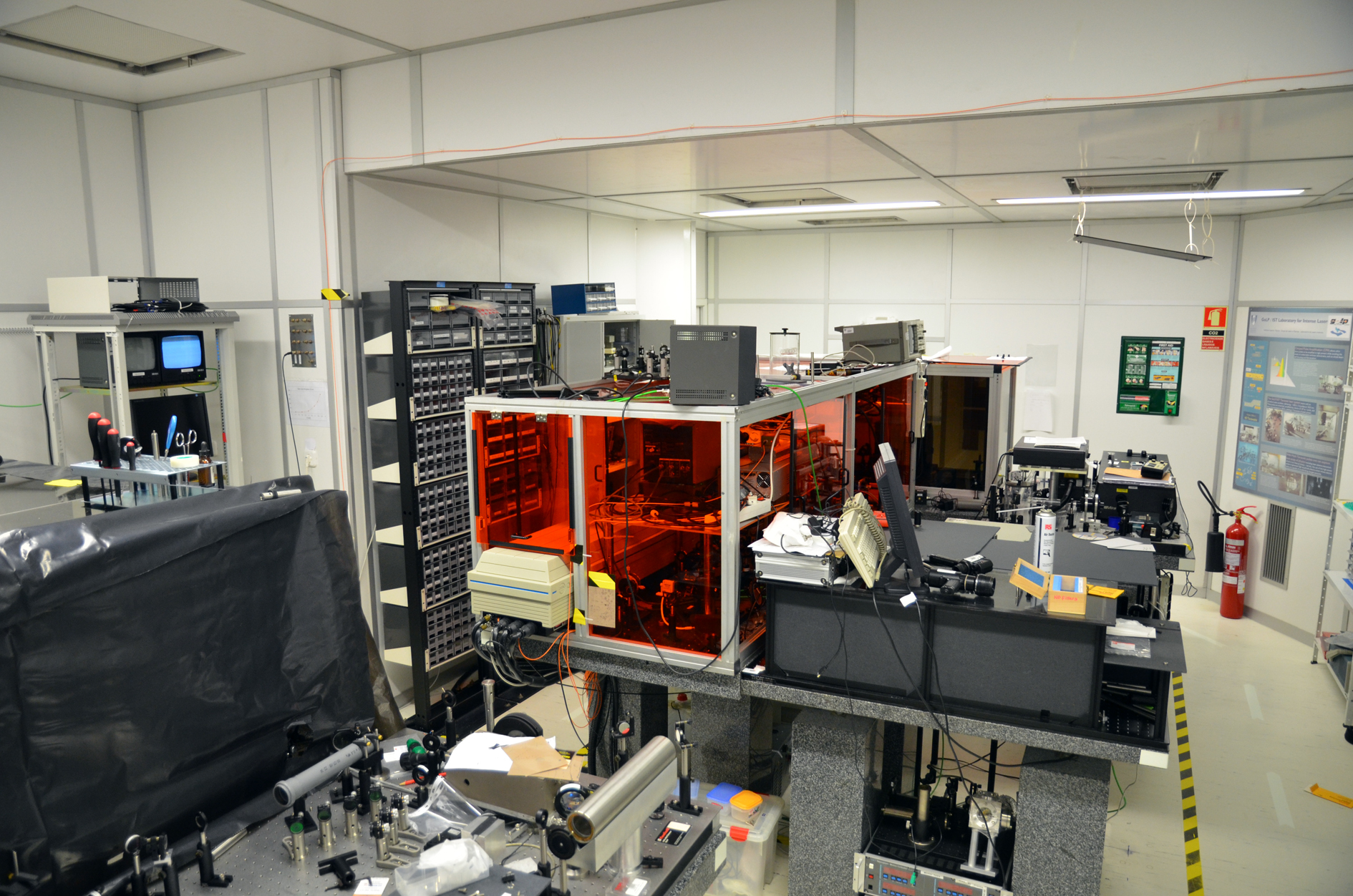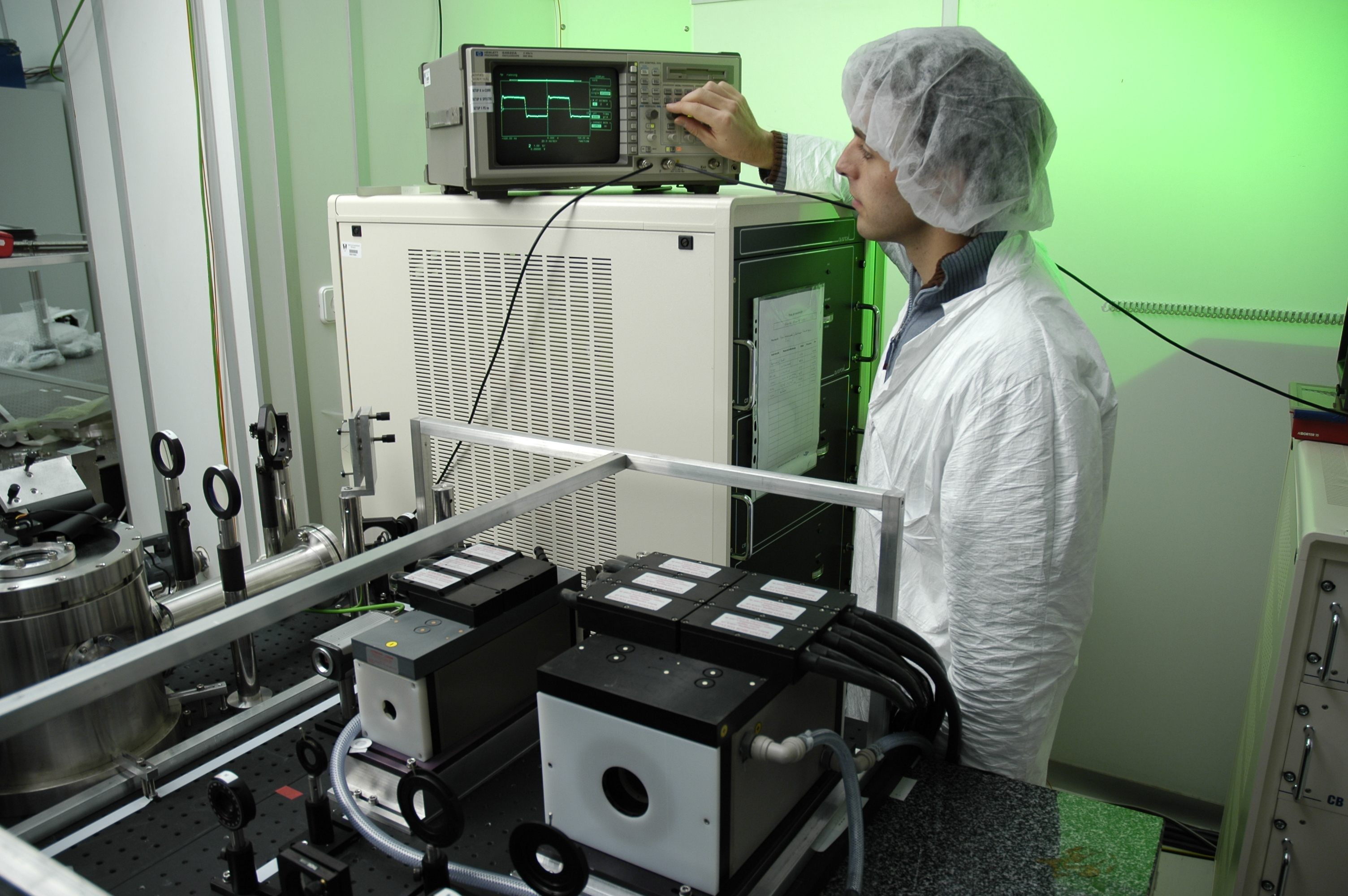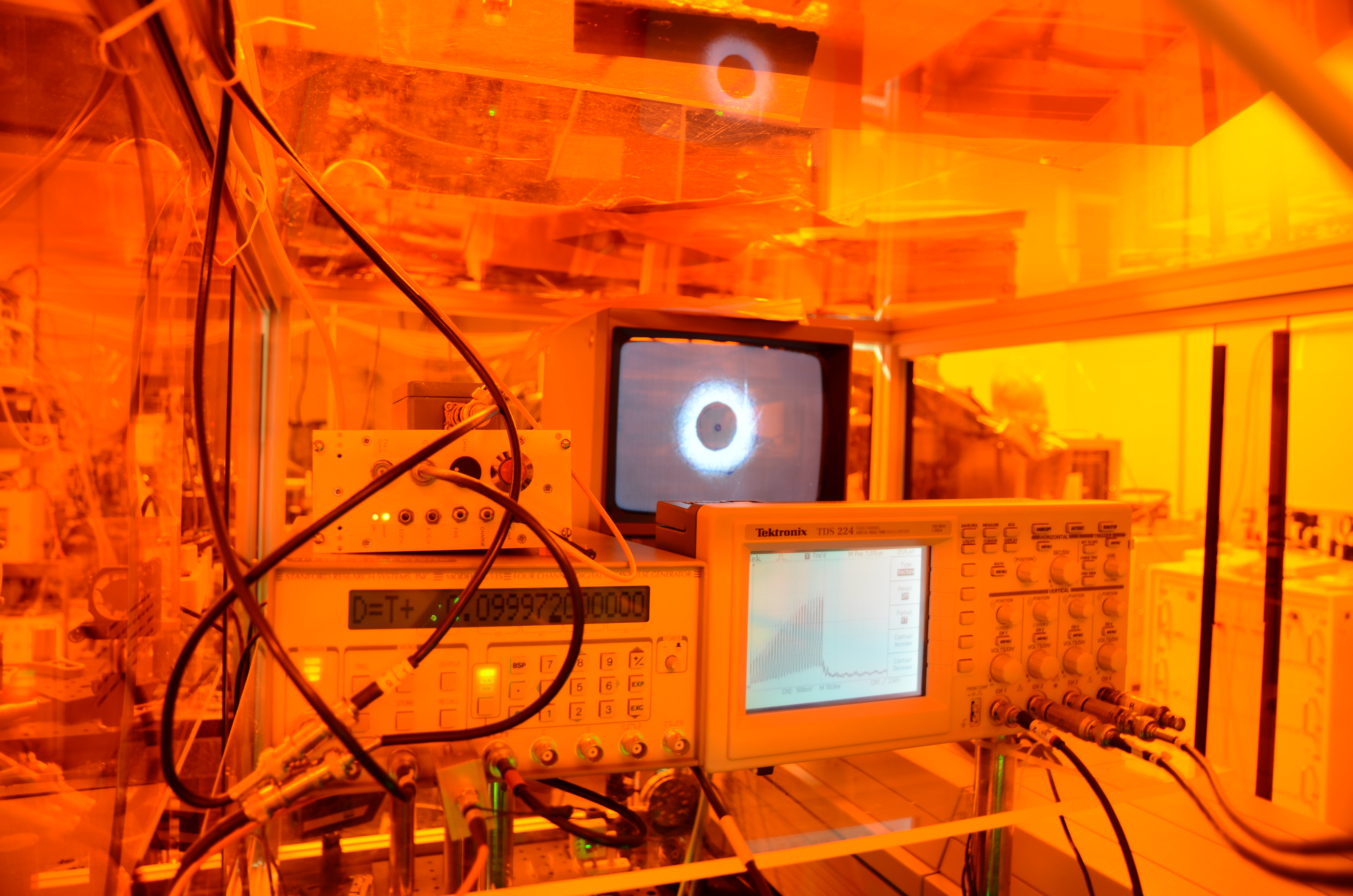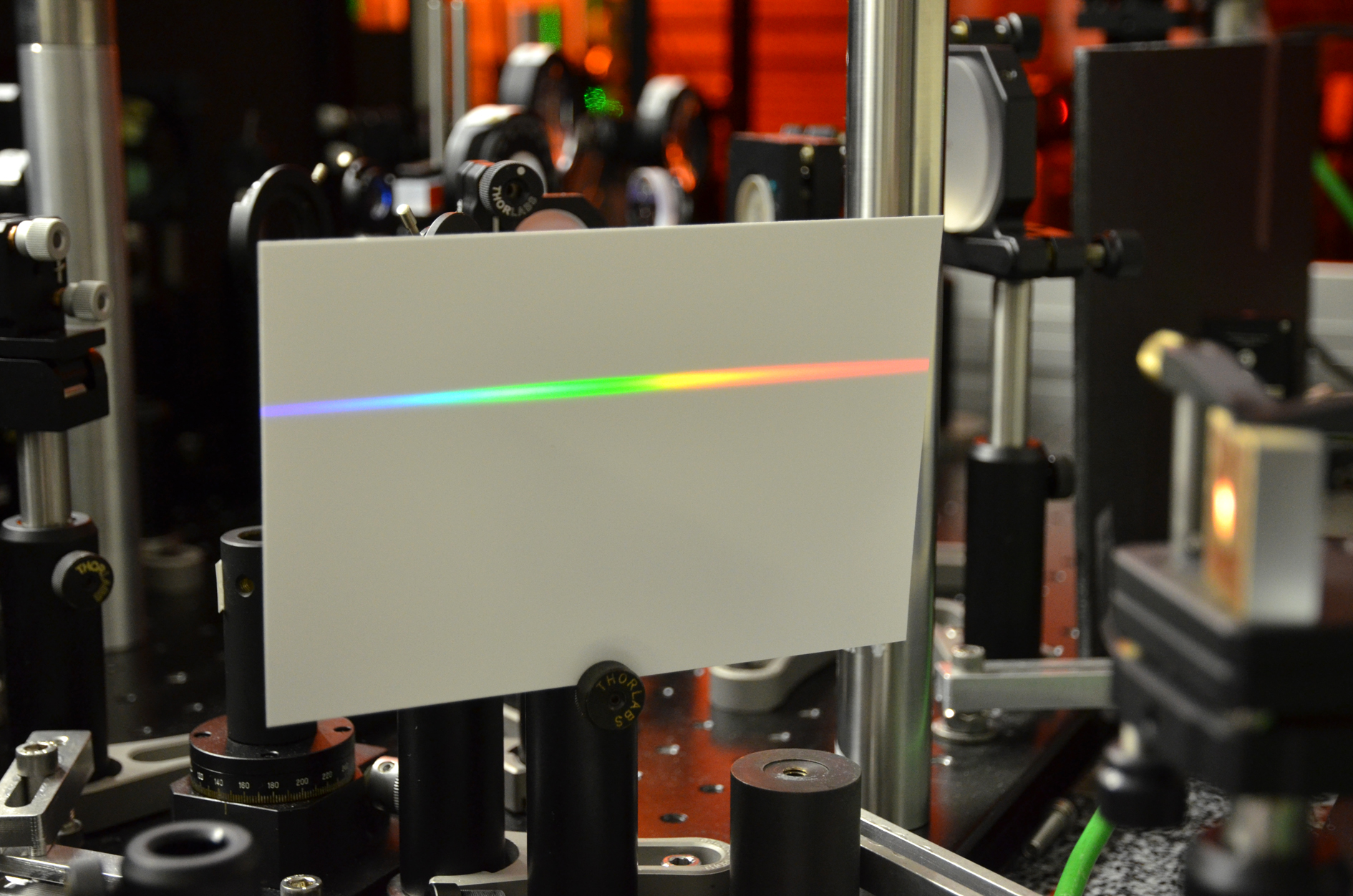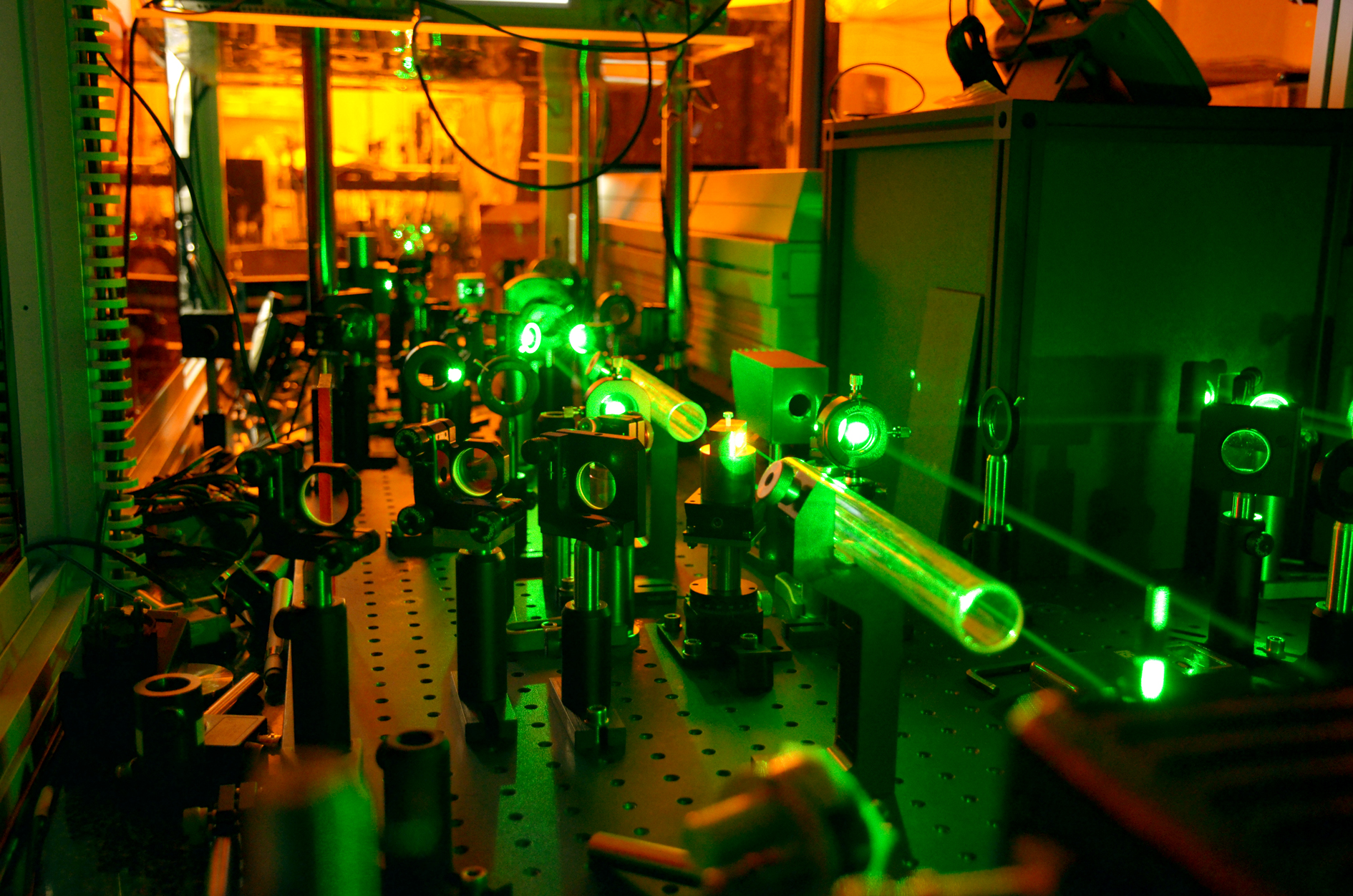Infrastructures
The X-GoLP team investigation is sustained not only by computational simulation and its visualisation, but also by the experimental component, and for such we recur to specific technical tools and facilities. Our team members are trained in using these tools to study experimentally some of the theoretical assumptions made and to test their validity.
Below you have some information regarding the lab facilities.
Laboratory for Intense Lasers
The Laboratory for Intense Lasers, located at IST, hosts a 15 TW / 6 J / 400 fs Ti:sapphire/Nd:glass main laser system, and is accessible for European researchers. Further info is provided on the following table:
- – Coherent Mira 900F + Verdi 10
- – 120 fs, 1053 nm
- – Offner type
- – 60 ps/nm, 15 nm full width
- – Ti:sapphire regenerative amplifier
- – Pumped by frequency-doubled Nd:YAG
- – 2 mJ / 10 Hz / contrast 105
- – Grating compressor in air for 2 mJ / 250 fs pulses
- – Nd:glass rod amplifiers (Quantel)
- – Double pass Ø16 mm – 1 J / 3 min
- – Double pass Ø45 mm – 10 J / 20 min
- – Two 140 x 120 mm holographic gratings
- – Vacuum enclosed
- – 2nd and 3rd order autocorrelators
- – Tilted pulse front autocorrelator
- – SPIDER
- – FROG / XFROG
- – Wavefront + beam profile monitor
- – Radial shearing interferometer
- – Near + far field imaging
Access conditions
- Users can be either from public or private research institutions or from an SME, providing the results of the research are publicly disseminated.
- Please notice that the facility is not being given specific funding for supporting access. External researchers must cover their own travel and subsistence expenses, as well as any specific equipment required for their application.
- Access time is currently limited to a maximum of 4-8 weeks per year, depending on demand, at a time to be scheduled between the L2I team and the users.
- Access opportunities are advertised by means of a call for proposals. A proposal is submitted through a specific form that may be requested, and can be prepared with the assistance from an internal researcher.
- The proposal form consists of an abstract of the proposed experiment or measurement, identification of PI and research team, a description of the required equipment, laser configuration and diagnostics, and a proposed experiment schedule.
- Proposals will be evaluated by an external independent peer review panel, and ordered in terms of the scientific merit of the proposed research.
- Users shall be given adequate training in safety and handling with the relevant laser systems before starting an experiment, and an L2I researcher or technician will be available for assistance during an experiment.
You can check the location of our facilities here

